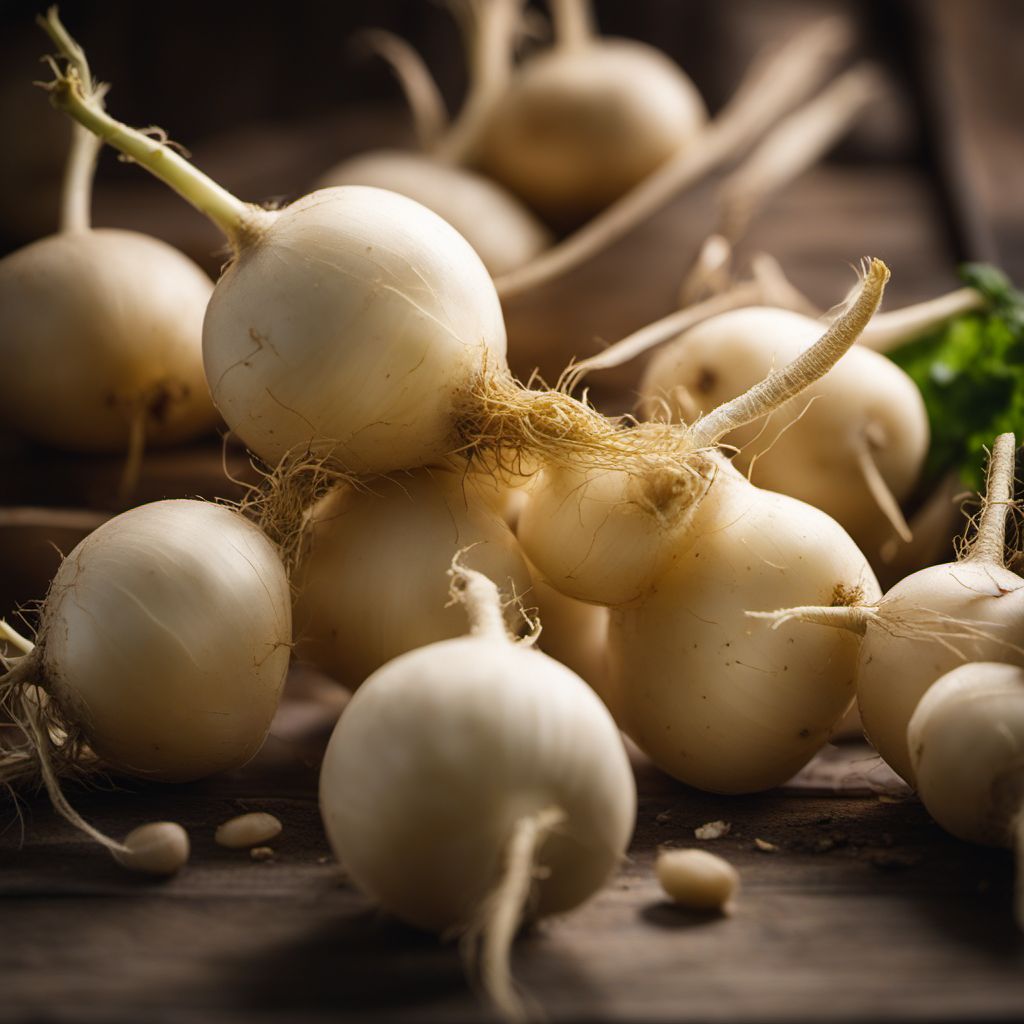
Ingredient
Turnips and similar-
The Versatile Root: Exploring Turnips and Similar Vegetables
Turnips and similar vegetables belong to the Brassicaceae family and are characterized by their round or elongated shape, with a white or purple skin and a crisp, white flesh. They have a slightly sweet and peppery flavor, similar to radishes, and a firm yet tender texture. These vegetables can be enjoyed raw, cooked, or pickled, making them a versatile addition to any kitchen.
Origins and history
Turnips have been cultivated for centuries and have a rich history in various cuisines around the world. Originating in Europe, they were widely consumed by ancient Greeks and Romans. Turnips were also a staple food during the Middle Ages and were brought to North America by European settlers. Today, turnips and similar vegetables are enjoyed globally and are particularly popular in Asian, European, and American cuisines.
Nutritional information
Turnips and similar vegetables are low in calories and fat, making them a healthy choice for those watching their weight. They are also a good source of fiber, vitamin C, and potassium, providing essential nutrients for overall well-being.
Allergens
There are no known allergens associated with turnips and similar vegetables.
How to select
When selecting turnips and similar vegetables, look for firm and smooth skin, free from blemishes or soft spots. The greens should be vibrant and fresh, indicating their freshness. Avoid turnips that feel spongy or have shriveled greens, as these are signs of deterioration.
Storage recommendations
To store turnips and similar vegetables, remove the greens and store them separately in a plastic bag in the refrigerator. The roots can be stored in a cool, dark place for up to a month. Ensure they are free from moisture to prevent rotting.
How to produce
Turnips and similar vegetables can be easily grown in home gardens. They thrive in cool climates and require well-drained soil. Sow the seeds directly in the ground or in containers, ensuring they receive adequate sunlight and regular watering. Harvest the roots when they reach the desired size, usually around 2-3 inches in diameter.
Preparation tips
Turnips and similar vegetables can be enjoyed in various ways. They can be roasted, steamed, boiled, or mashed. The greens can be sautéed or added to soups and stews. Additionally, they can be pickled for a tangy and crunchy snack. Experiment with different cooking techniques to discover your favorite preparation method.
Substitutions
Rutabagas can be used as a substitute for turnips, as they have a similar flavor and texture. Additionally, radishes or kohlrabi can be used to add a peppery kick to dishes if turnips are not available.
Culinary uses
Turnips and similar vegetables are commonly used in soups, stews, and roasted vegetable medleys. They can also be added to salads for a refreshing crunch or pickled for a tangy accompaniment. In Asian cuisines, turnips are often used in stir-fries and noodle dishes.
Availability
Turnips and similar vegetables are widely available in North America, Europe, and Asia. They are commonly cultivated in countries such as the United States, Canada, France, Germany, China, and Japan.
